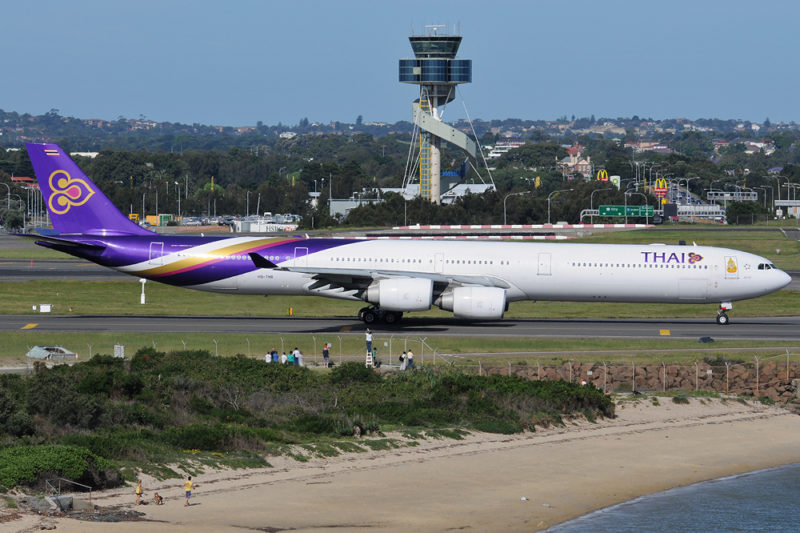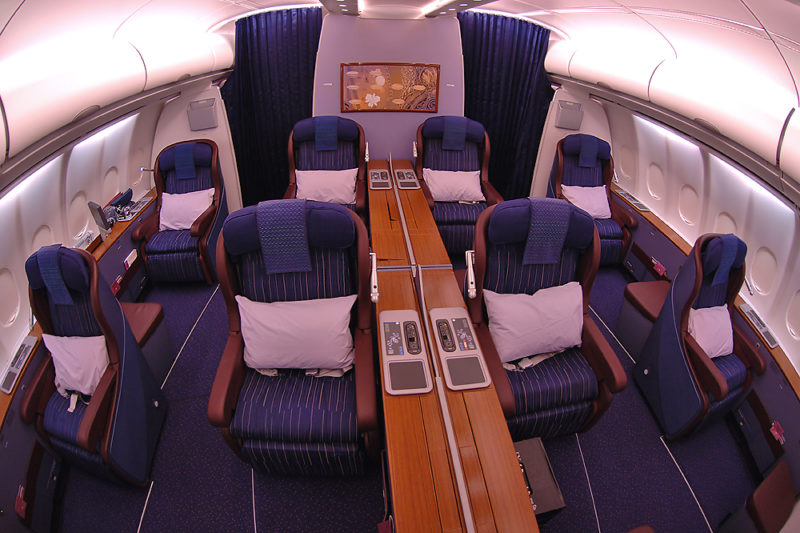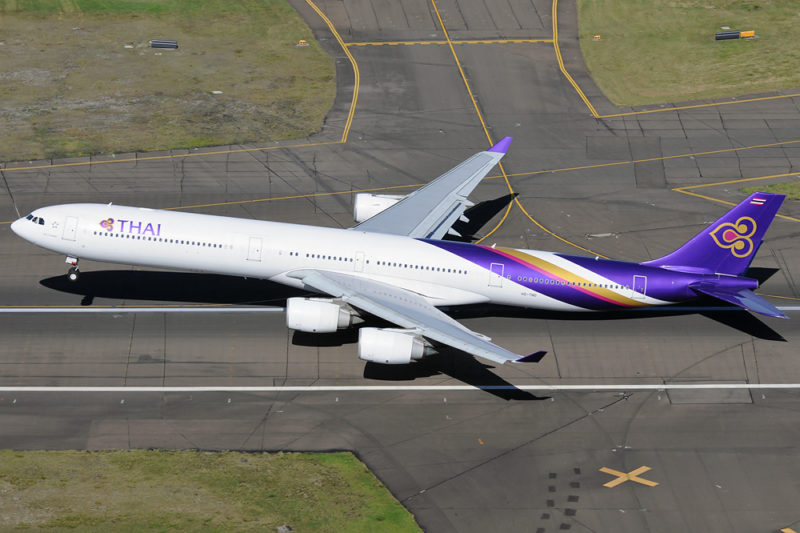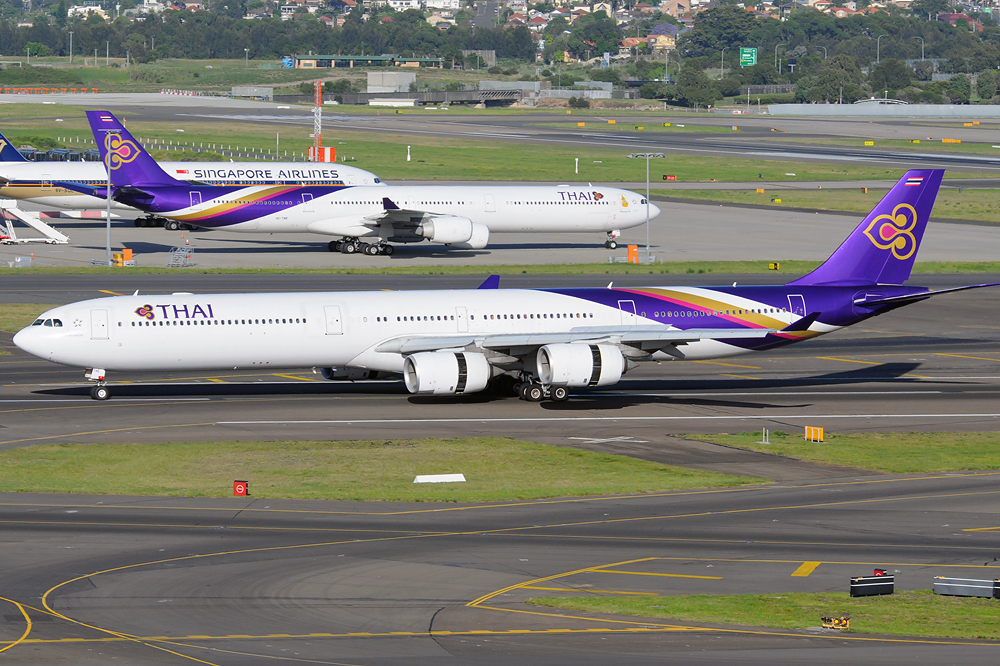As Thai Airways assesses their fleet options, the Thai government has stepped in suggesting that the airline reintroduces their retired Airbus A340-600s.
Parked at U-Tapao International Airport, the six A340-600s have been awaiting buyers since their retirement in 2015. However, with maintenance bills piling up, and no sign of customers, the economics of reintroducing the frames may work out.
The idea comes as Thai Airways’ plan to purchase 38 new aircraft was declined by its board in September, with the intention to reduce upfront costs following intense scrutiny over their $3.2 billion debt and growing losses.

As an alternative Deputy Minister of Transport, Thaworn Sennam, advised that the airline install new interiors in the A340s and deploy the aircraft on long-haul routes, according to an article published by Forbes.
Where the theory proves easier then practice is the operating economics of the A340-600, let alone getting them to operational status. Featuring the original interiors from their 2005-2008 deliveries, the aircraft would need a large and expensive interior overhaul to bring in worthy figures.
Sam Chui took this photo of the Thai Airways A340-600 Royal First Class cabin:

Making matters worse, Thai Airways would have to re-balance their cabins as their A340-600s are very premium heavy. From design, to manufacturing to installation, the entire process could take more than a year. At that point, the aircraft will be past mid life.
Compared to their modern fleet, of Airbus A350s and Boeing 787 Dreamliners, the A340 would prove to be a massive hit to operating economics and passenger comfort, as a result of the aged design.
The aluminium fuselage with the small windows, the outdated air conditioning system and the dated lighting would convince any passenger to throw a negative review in the mix coming from a newer aircraft.
Additionally, the four Rolls-Royce Trent 500 engines, paired with the aged aerodynamics of the airframe, would see greater fuel consumption; sending money tumbling down the drain, making the financial situation worse.

Most airlines have or are in the process of retiring their A340 fleets and without a huge demand, thanks to the more efficient twin-engine alternatives, the aircraft mostly end up as scrap metal.
Whether this idea is serious or not remains to be unclear. It could be a tactic to change the mindset of the airline to help it reduce costs, however suggesting used A340-600s really puts their structural position under light.
As mentioned by Forbes, Thai’s Airbus A340s were an example of “management incompetence” due to their short lived operation before being idled for years whilst costing millions in maintenance.
The smaller A340-500 was a bigger disaster, with the aircraft purchased to operate long-haul flights to the United States. These flights were axed pretty shortly and all of a sudden became a niche, uneconomical aircraft which was just floating around in the fleet.
The moral of the story for Thai Airways in this situation is to ensure aircraft are purchased to address a visible increase in demand, rather than to replace older aircraft that can’t be utilised as much.
What Thai Airways needs to focus on is turning a profit and proving that the airline can benefit from newer aircraft at the correct time.
What are your thoughts on this proposal?




